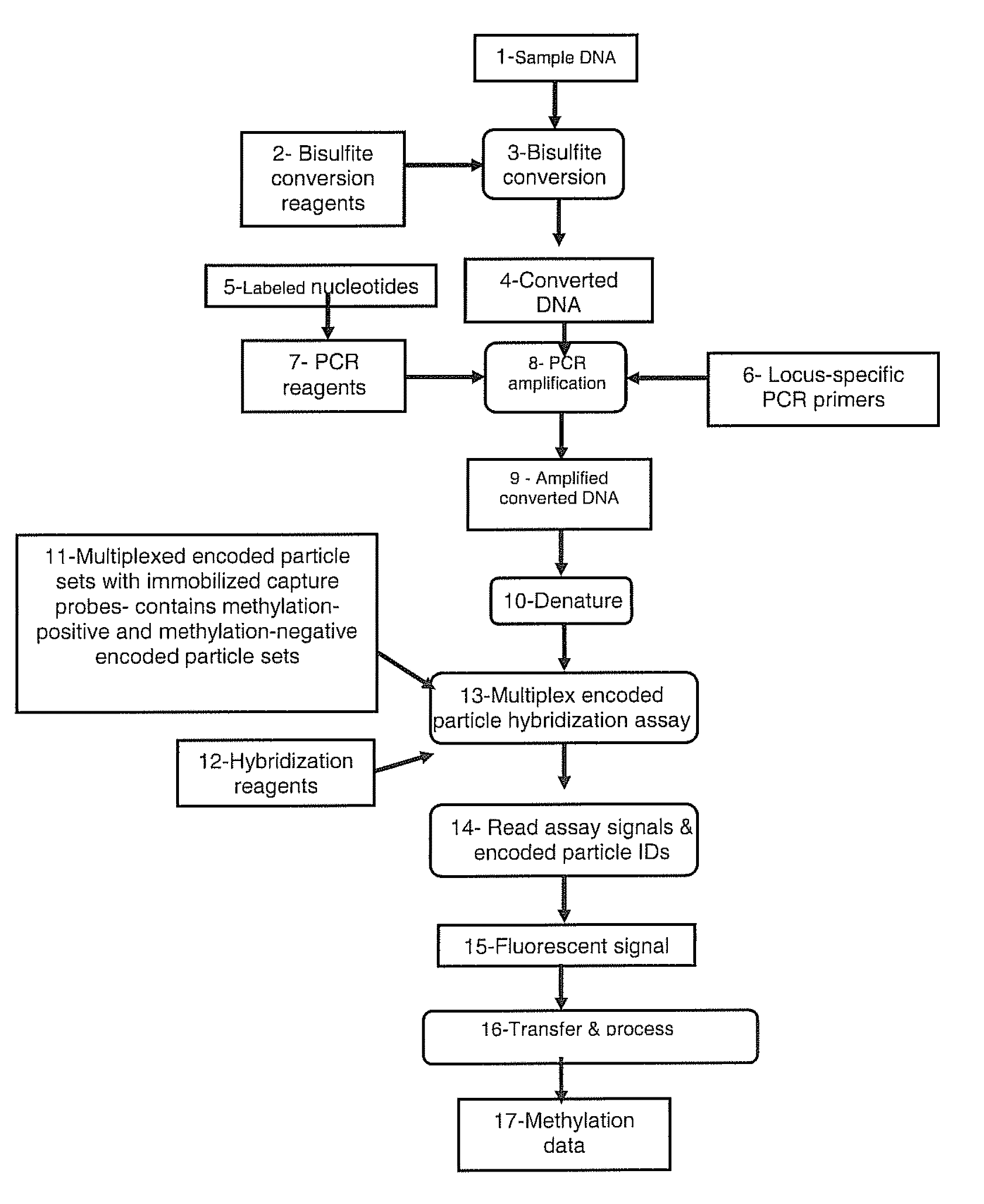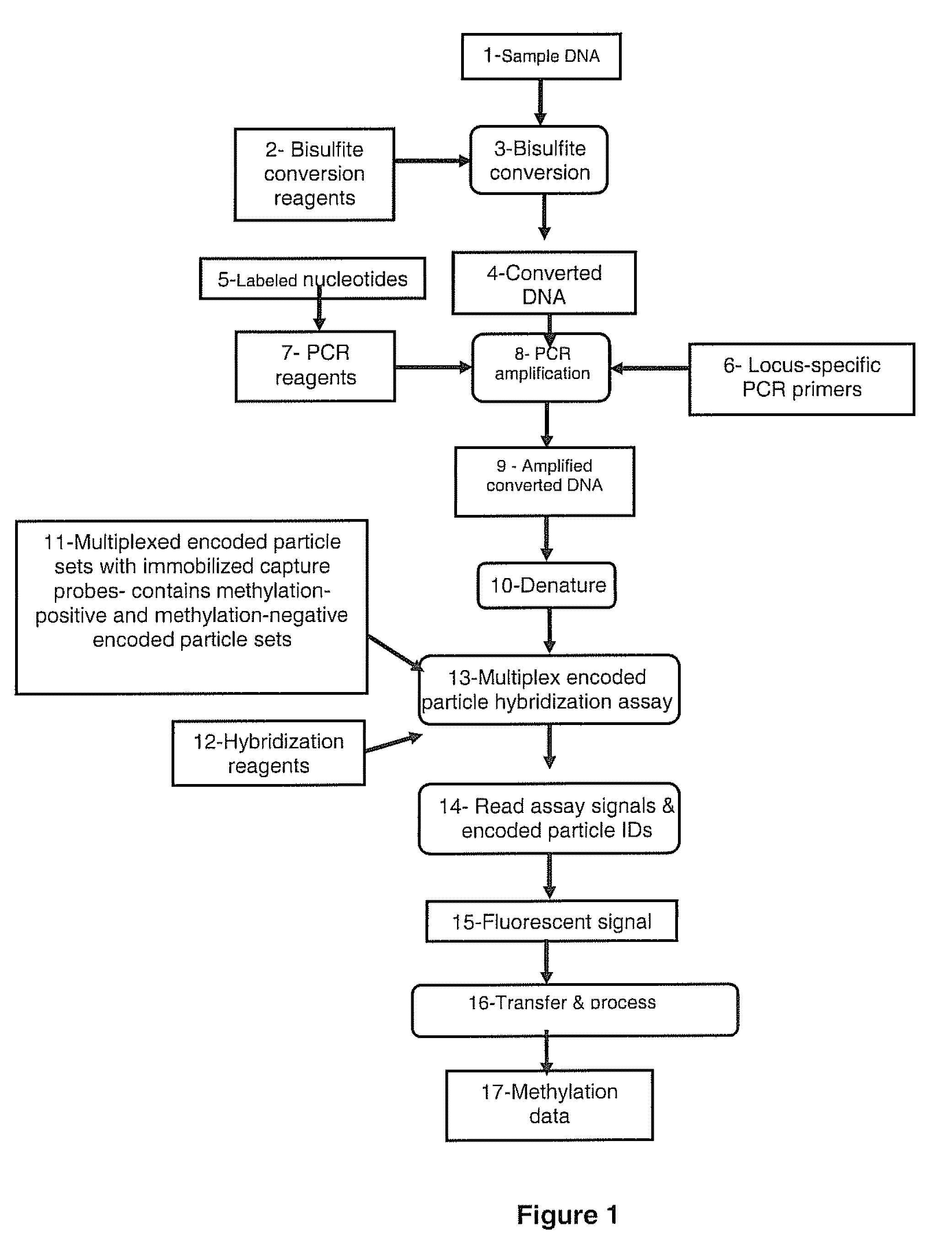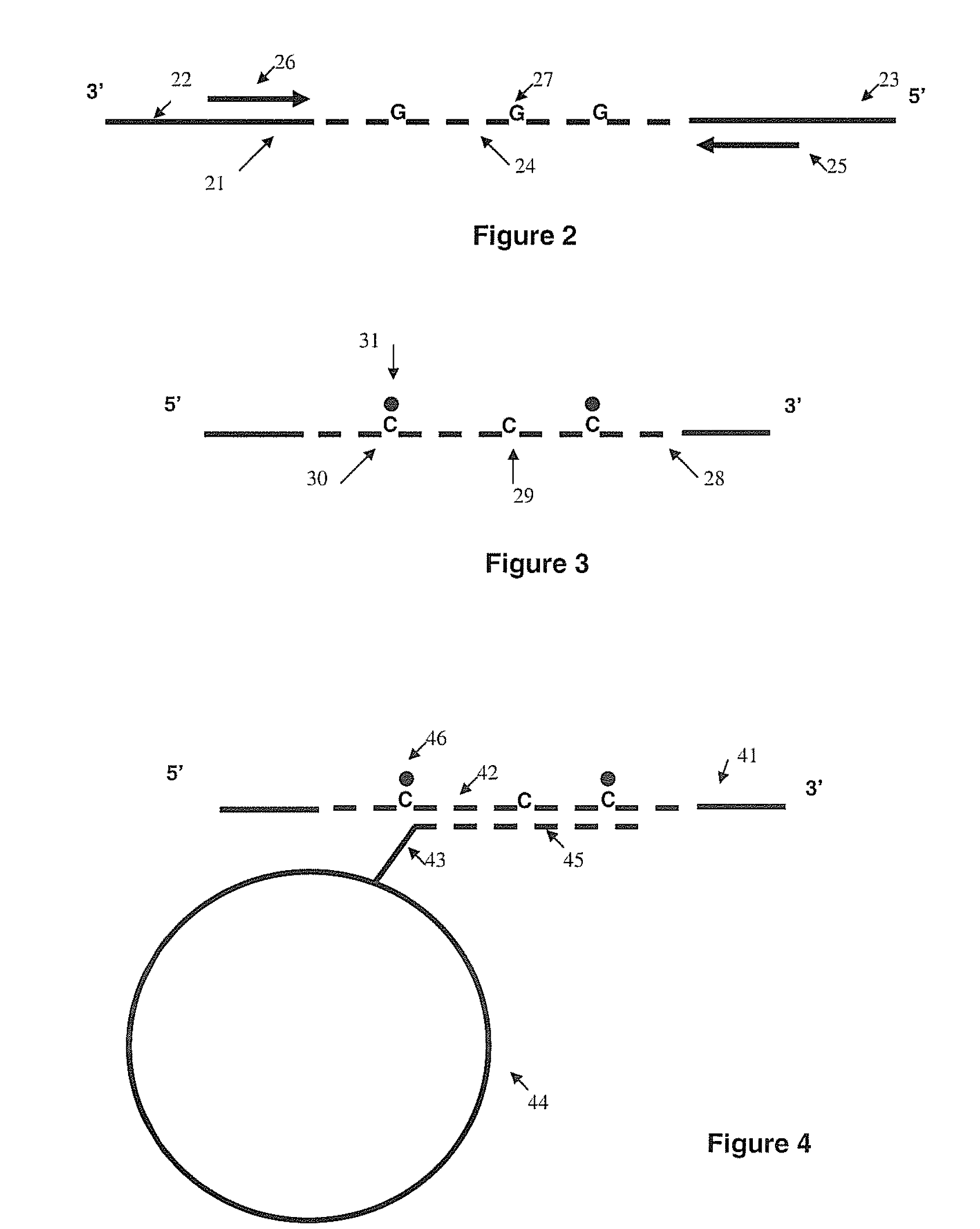Methods for detecting DNA methylation using encoded particles
a technology of encoded particles and methylation, applied in the field of assays, can solve the problems of limited disorder panels that can be addressed to only two, labor-intensive methods, and non-applicability of assays of this type to assessing the aggregate methylation state of longer cpg-containing dna segments, such as promoter regions
- Summary
- Abstract
- Description
- Claims
- Application Information
AI Technical Summary
Benefits of technology
Problems solved by technology
Method used
Image
Examples
example 1
[0148]This example describes assays performed using the Fragile X syndrome promoter locus as a representative target genomic locus. In X chromosome-linked disorders such as Fragile X it is useful to assess the relative amounts of both the unmethylated and the methylated forms of genomic DNA in the promoter region, as males and females have a matrix of possible states due to their different numbers of X chromsosomes. Normal females have 2 copies of the X chromosome, and one of them is methylated in normal subjects as a consequence of a process called X chromosome inactivation. Males have only one X chromosome, and the promoter region is not methylated in a normal subject and is methylated in an affected subject. A simplified representation of this is shown in the table below.
Male subjectFemale subjectMethylatedUnmethylatedMethylatedUnmethylatedNormal0111Affected1020
[0149]Intrepretation of the methylation state can be complicated when the affected subject presents a mosaic cellular ca...
example 2
[0192]This example describes assays performed using the Fragile X syndrome promoter locus as a representative target genomic locus, using samples collected from affected and unaffected individuals.
[0193]The experimental work was performed essentially as is described in Example 1, with variations as described below.
[0194]For the PCR amplification, 35 rather than 40 cycles were performed. PCR conditions can be varied, depending on the selected enzyme, buffers, reaction components, PCR machines and the like.
[0195]The capture probe sequence for methylated converted amplified DNA was: CGC CTC CGT CAC CGC CGC CGC CCG CGC TCG CCG TCG A (SEQ ID No. 6)
[0196]The capture probe sequence for unmethylated converted amplified DNA was: TTG GTT TTA TTT TTG GTG GAG GGT TGT TTT TGA GTG GGT G (SEQ ID No. 7)
[0197]In this Example, referring to FIG. 7, the input to the hybridization assay was heated for 5 minutes to a temperature of 98° C., then holding the DNA at 60° C. until transferring it into the hyb...
example 3
[0203]This example describes a method to determine both the Fragile X methylation state and the gender of a bisulfite converted DNA sample in a multiplex assay format. Gender determination is useful, for example, for clarifying the results obtained from the methylation assay for Fragile X in some cases. Specifically, the interpretation of the methylation results from an affected mosaic male would be complicated by the detection of both methylated and unmethylated states. Without an assay to determine gender, this subject could be diagnosed as an unaffected female, when gender is unknown.
[0204]Currently the most common assay to determine gender is the amelogenin test. Amelogenin protein is transcribed from genes found on both chromosomes X and Y. These genes (AMEX and AMEY) are largely homologous, but have regions of sequence variance that have been used in PCR based assays to detect the presence of either AMEX or AMEY and thereby define gender. For example as shown in FIG. 14, a wid...
PUM
| Property | Measurement | Unit |
|---|---|---|
| diameter | aaaaa | aaaaa |
| diameter | aaaaa | aaaaa |
| size | aaaaa | aaaaa |
Abstract
Description
Claims
Application Information
 Login to View More
Login to View More - R&D
- Intellectual Property
- Life Sciences
- Materials
- Tech Scout
- Unparalleled Data Quality
- Higher Quality Content
- 60% Fewer Hallucinations
Browse by: Latest US Patents, China's latest patents, Technical Efficacy Thesaurus, Application Domain, Technology Topic, Popular Technical Reports.
© 2025 PatSnap. All rights reserved.Legal|Privacy policy|Modern Slavery Act Transparency Statement|Sitemap|About US| Contact US: help@patsnap.com



